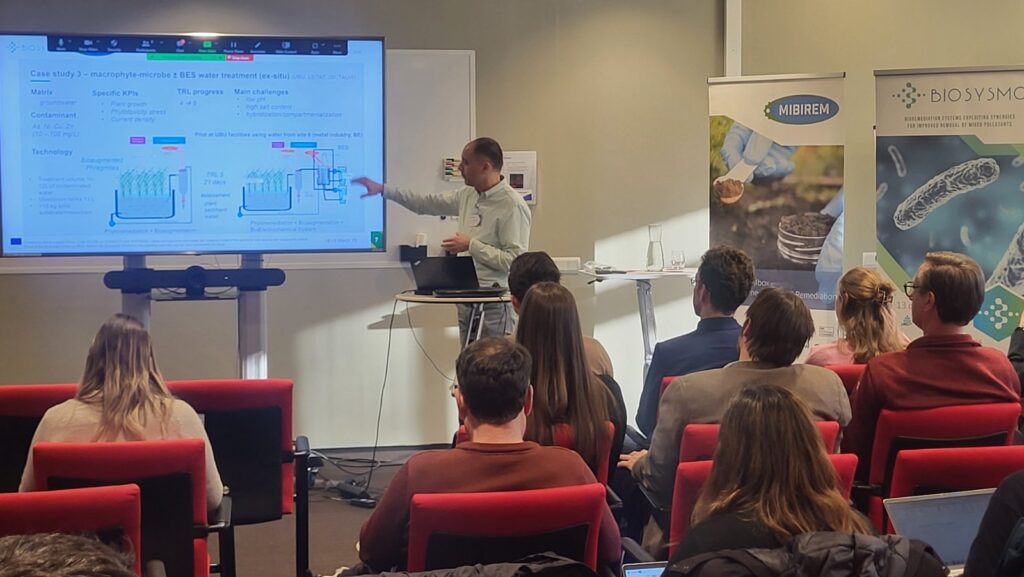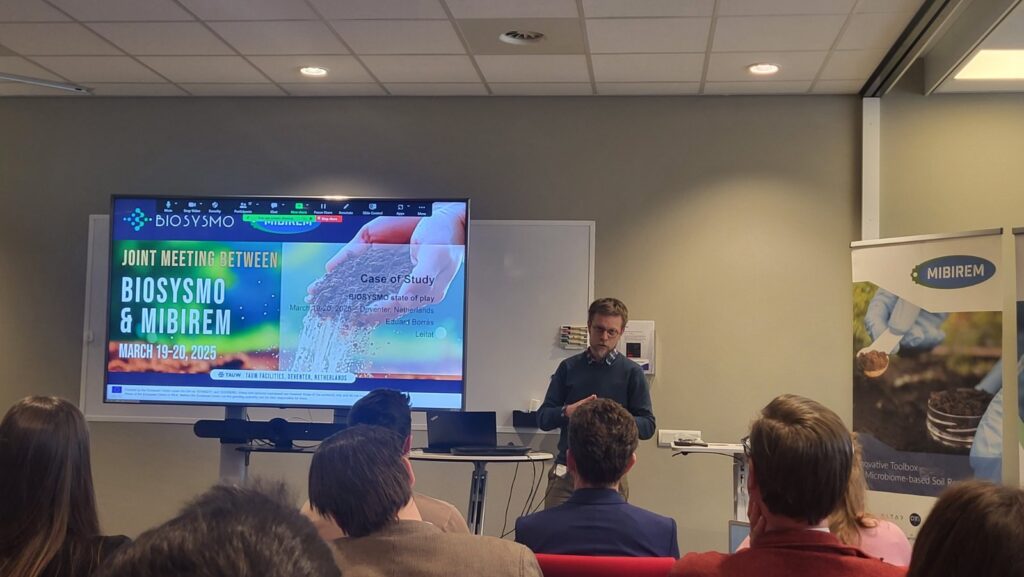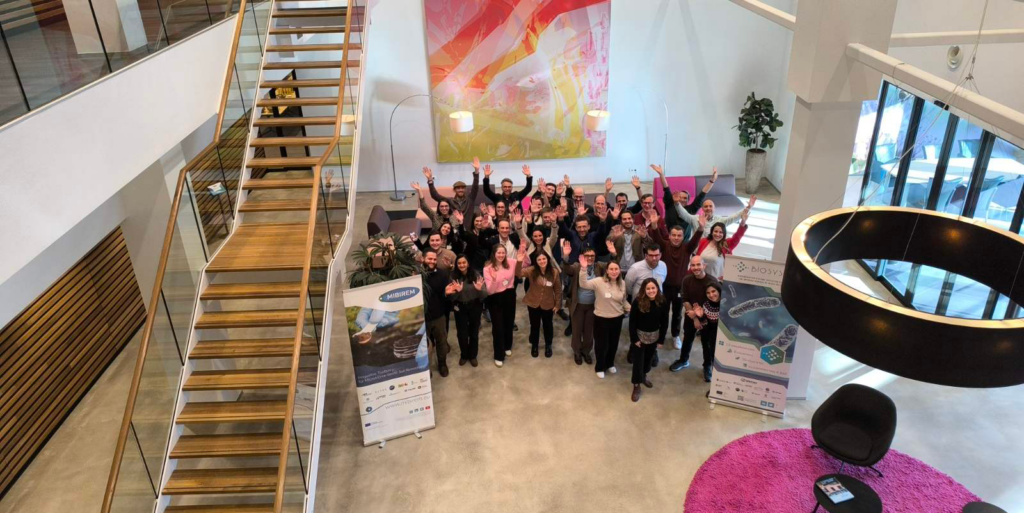
Date: 19-20 March 2025 | Location: Deventer, Netherlands
During 19 and 20 March BIOSYSMO and MIBIREM projects joined forces for a two-day meeting, dedicated to advancing bioremediation solutions for environmental pollution in the TAUW headquarters, in Deventer, Netherlands. Both Horizon Europe-funded initiatives focus on harnessing microbiomes and computational tools to enhance sustainable remediation strategies.
Strengthening Collaboration between both teams
The event brought together 45 experts to accelerate the integration of project findings and explore synergies between the two projects by advancing microbial consortia, multi-omics, and systems biology to improve microbial remediation.
Opening remarks were given for both project representative that set the stage for structured knowledge exchange. The event was framed as a strategic integration effort rather than a simple project update, reinforcing the commitment to long-term cooperation.
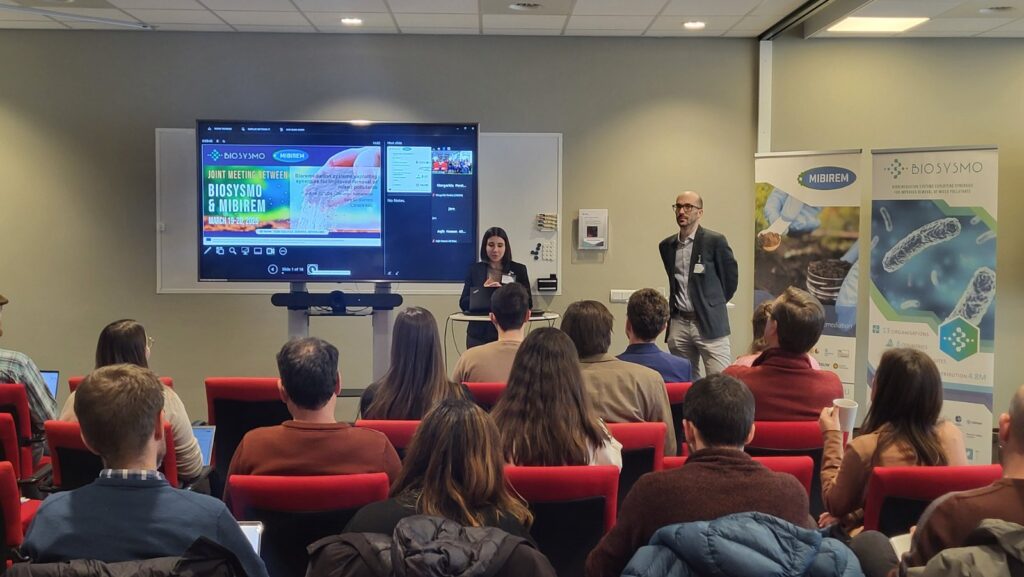
A key highlight was the presentation of each project’s core technologies and case studies:
- MIBIREM showcased its microbiome analysis techniques, including whole genome sequencing and metatranscriptomics, for a deeper understanding of bioremediation mechanisms.
- BIOSYSMO introduced its computational design tools and database for microbial systems, focusing on optimising synergistic biosystems.
Discussions highlighted the complementarity of both approaches, particularly in combining BIOSYSMO’s metabolic models and MIBIREM’s multi-omics data to optimise synthetic consortia.
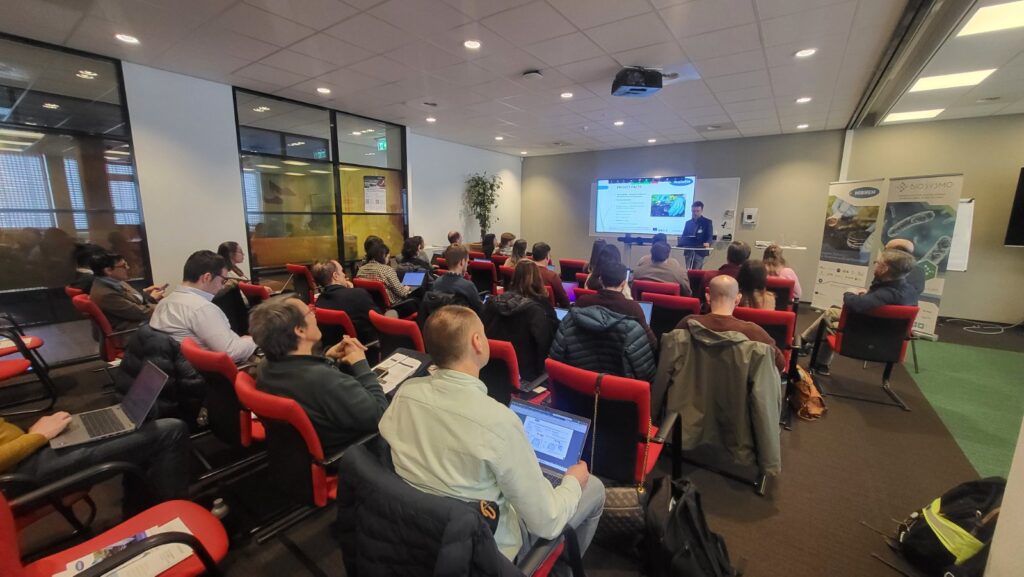
Real-World Applications and Field Studies
During a session focused on field studies, the importance of testing microbial strategies in real-world conditions was emphasised. Presenters provided updates on the progress of field trials, Technology Readiness Levels (TRL), and the challenges associated with scalability, heterogeneity, and engineering constraints.
The case studies presented spanned a variety of environmental matrices and contaminants. A dedicated discussion segment highlighted the transition from laboratory to field through mesocosm testing, stressing the necessity of maintaining microbial viability and system performance in complex ecosystems.
Addressing Regulatory and Standardisation Challenges
Both projects face key regulatory hurdles: BIOSYSMO in field testing of genetically modified microbes and MIBIREM in defining performance benchmarks for natural microbiomes. The meeting emphasised the need for:
- Standardised qPCR primer sets and monitoring protocols.
- Stronger science-policy dialogue to accelerate regulatory acceptance.
- A shared repository for microbial consortia and multi-omics data to enhance interoperability and reproducibility.
Next Steps and Future Outlook
Following the discussions, the importance of continuing the exchange and analysis of multi-omics data with a focus on the HCH case and cross-site comparisons was highlighted; planning practical training sessions and workshops to facilitate knowledge exchange on technical topics was proposed; exploring the creation of a shared repository for microbial consortia and multi-omics data to align protocols and formats was underlined; while identifying common regulatory concerns to contribute to EU-level discussions was stressed, particularly regarding microbiome use and risk communication.
